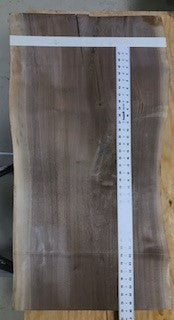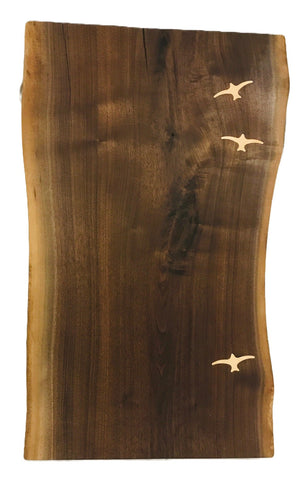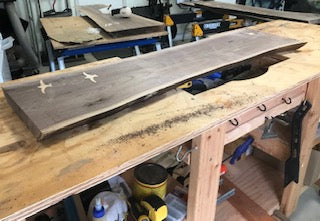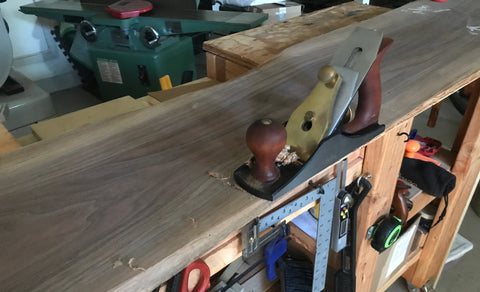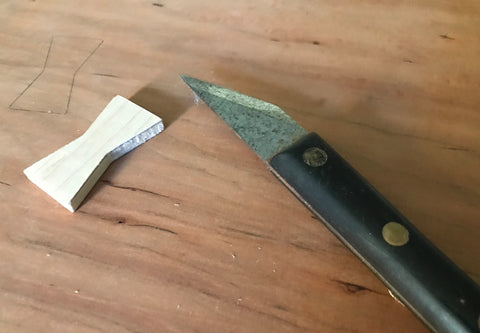Showcasing nature's unique and imperfect beauty.
A craftsman's view.
"With an eye to elevate a functional piece of furniture to a work of art, each natural hardwood slab is carefully selected for its unique character, shape and pattern before beginning the painstaking process of finishing to bring out the full natural beauty and depth of color hidden within."
Left - raw slab Right - Same slab - finished
The Arts and Crafts movement of the late 19th and early 20th centuries sought to promote a return to hand craftsmanship, natural materials and artistic quality, at a time when the mass-produced, ornate and often low quality and inferior products of the Industrial Revolution were becoming the norm.
In the 1940s and '50s Mid-Century Modern furniture, characterized by simple, clean lines, functionality and quality materials emerged. Around that same time George Nakashima, a Japanese American craftsman with training in architecture became known as a leader of the “Live Edge rebirth era” for his expressive use of wood, especially in Live Edge furniture (also known as Living Edge furniture or Natural edge furniture). Combining beautiful natural woods and fine craftsmanship, Nakashima became an inspiration to generations of fine handcrafted furniture makers. Maintaining the natural beauty of the wood complements the clean simplicity of Mid-Century Modern furniture and Contemporary furniture designs.
There is simply nothing like the dramatic natural beauty and character of a finely finished American Hardwood slab - the unique shape of the tree creating its own natural artform, keeping the spirit of the tree alive. Viewed from alternate angles you will see patterns and depth of color that seem to change before you!
At Cottage Industries we strive to create some of the finest finished Live Edge furniture designs you will see. We look at literally hundreds of raw hardwood slabs before selecting the special few in which we see the potential to become dramatic showpieces, highlighting nature's inspiring beauty. We use only full width American grown hardwood slabs, often salvaged at the end of the trees lifespan or fallen during storms. Many hours of finishing followed by multiple hand-rubbed coats of environmentally friendly oil/wax bring out the true natural beauty of these amazing hardwoods. We pair the finished slabs with a custom hand-welded steel or natural hardwood base, kept clean and simple to complement, not conflict or distract from the slab's splendor.
We work with a variety of American grown hardwoods, but American Black Walnut is our absolute favorite.
American Black Walnut is a type of tree that belongs to the walnut family Juglandaceae. It is native to North America and grows mostly in moist soils along rivers and streams. It is highly valued by fine woodworkers for its rich, dark brown color. Black walnut is durable, and good to work with.
American black walnut is a tree that carries symbolic and spiritual meaning. Some of the common themes associated with the black walnut are:
-
Growth and Resilience: The black walnut tree can grow in harsh conditions and survive for hundreds of years. It represents the ability to overcome obstacles and thrive in life.
-
Community and Heritage: The black walnut tree is often planted as a sign of respect and gratitude for one’s ancestors and roots. The tree also provides shade and shelter for other living beings, creating a sense of harmony and community.
Black Walnut is a powerful and meaningful symbol that can inspire us to grow, learn, create, and connect.
